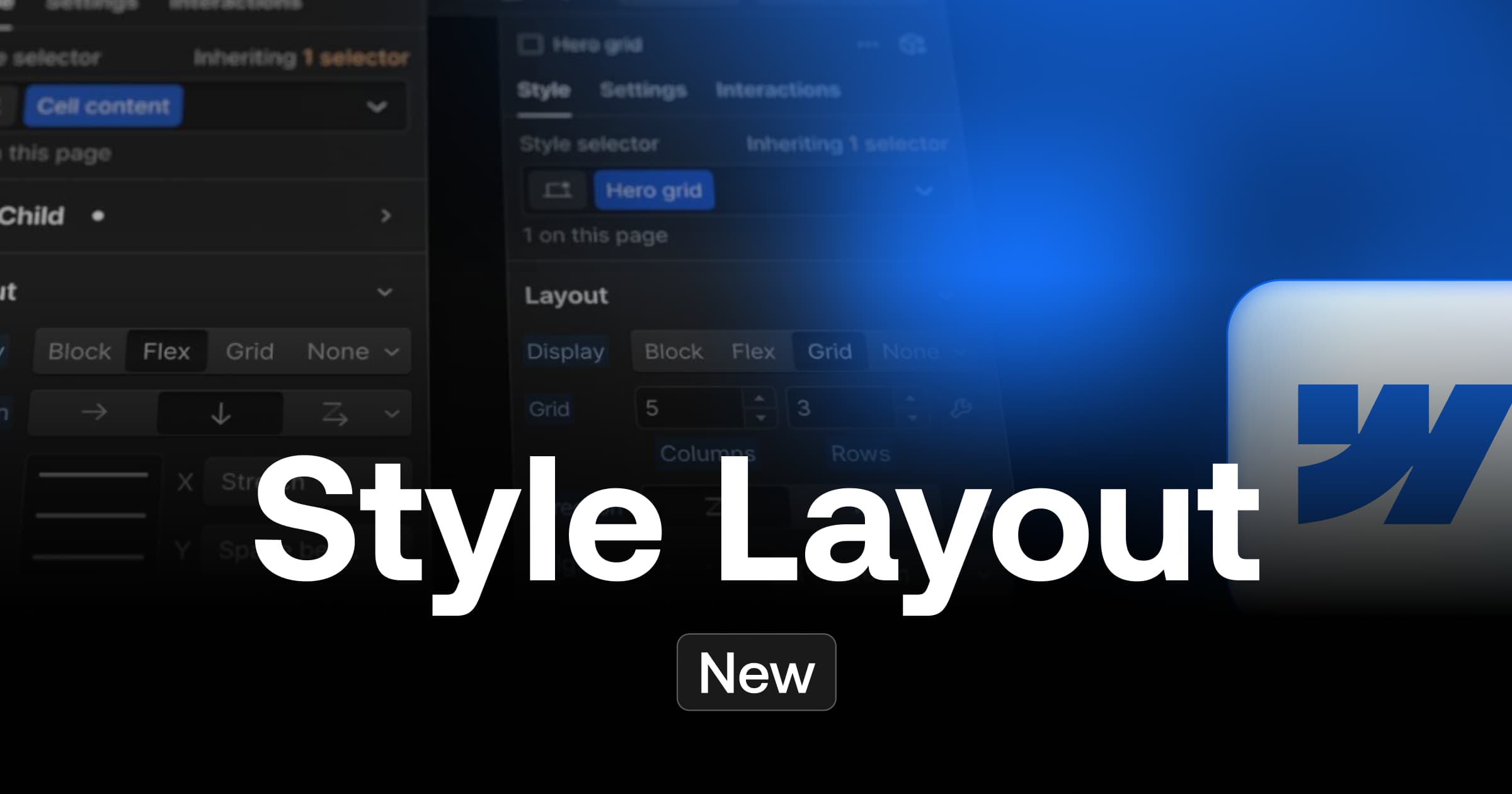Webflow is a nocode web designer tool. Designed with "drag and drop" functionalities, this web design tool may at first sight seem easy to use. But once you get your hands on it, you quickly realise that this nocode tool requires real webdesign skills on Webflow. It would be a shame to miss this tool because of its complexity, because it offers many advantages, in terms of design freedom, respect of SEO best practices, ability to make a site evolve, its CMS perfectly designed for an efficient data management or its ability to work in team thanks to the editor mode.
Fortunately, unlike Wordpress, Webflow has optimised the accessibility of its tool by creating an intuitive and easy to use no code tool: the editor mode.
What is the editor mode in Webflow?
The Webflow editor mode is a tool designed to optimize the content management of a website. It allows you to develop the content of a website without any particular web design skills. No complex dashboard, with advanced features, the editor mode is limited to a simple and intuitive interface.
You can easily create and modify texts, images, links of your static pages, but also create new content in a few minutes thanks to the dynamic pages of your CMS. You will be able to give several editors access to your team members and thus optimize the content of your Webflow site.

The advantages of the Webflow editor mode
Simplified interface
It does not require any particular web design skills. It is therefore very easy to use and any member of your team can participate in the evolution of the website.
Key features
This mode includes only the content management functions. You can add, delete or modify texts, images, blog posts, etc.
SEO compliance
Each editor will have access to the essential SEO features. They will be able to correctly tag the website by adding title and meta description to a page, optimising the URL, adding an open graph, etc.
Access to data
You will find in the editor mode all the pages of your website, whether static or dynamic. You will have direct access to the data from your various web forms so that you never miss a contact request. A work history allows you to see all the latest modifications, when they were made and by which member of your team.
Accessibility
The editor mode is easily accessible from your website. No need to connect to a Webflow interface, you will simply add /?edit after the URL of any page of your website.
Secure
Web designers don't have to worry, you can't break anything with the editor mode! 🥵 Unlike Wordpress, a Webflow editor will not be able to impact the structure of your page by moving or deleting sections, creating responsive issues, etc.
How to create an editor account in Webflow?
To create a new Webflow editor account you will need to ask your webdesigner to add your email as an editor in your project settings (see section "how to add or remove Webflow editors"). You will then receive an email from Webflow with a redirection URL to create your new account. Enter the information "first name", "last name", "email" (by default), "password", then create your new account. Your Webflow website page will load again, giving you access to the editor features bar at the bottom of your screen. You will be able to access all the pages and data of your Webflow website. Your cursor turns into a pen and allows you to change texts, images and links directly on the web pages of your Webflow website.
💡 In order to get editor access to your Webflow website you must at least subscribe to the CMS package. For more information on Webflow pricing and features, please visit the Webflow Pricing Plan.
How to modify the content of a static page with the editor mode?
Static pages are unique pages, which you cannot duplicate using the editor mode. However, you can modify their content by changing the texts, images, internal links, external links, etc. You can even participate in the design of the website. You can access the static pages of your site by clicking on the "Pages" tab on the left of the Webflow editor bar.
How to modify the content of a dynamic page with the editor mode?
In the editor mode, you will have access to all pages, sections and dynamic data of your website. It will therefore be very easy to create new dynamic pages or sections such as blog posts or job offers in your Webflow website. You will have access to this dynamic content directly in the "Collections" tab of the Webflow editor bar. Each collection gathers several pages or dynamic sections. You will be able to edit them or add new ones in a few clicks.
How to optimize the SEO of a static Webflow page?
SEO settings - The editor mode allows you to optimise the SEO settings of all your static pages. You can optimise the slug of your URLs, add a title, a meta description, a thumbnail, to improve the visibility of your pages on search engines.
Open Graph Settings - You will also be able to add an open graph to enhance the look of your pages when sharing them on networks. The editor mode allows you to customise the title, description and images of each open graph.
Site Search Settings - If you have a search bar in your Webflow website, you have the possibility to improve the overview of each of your pages in these searches.
How to optimize the SEO of a dynamic Webflow page?
The dynamic pages are directly set up by your webdesigner, and you only have to fill in predefined fields. So to optimise your new blog posts, you can easily optimise your SEO: customise your URL slug, add Title and Meta description tags, add an open graph, add Alt attributes to your images, apply a Heading structure to the body of your text, etc. You will have access to these SEO parameters directly in your dynamic pages. If these parameters are not accessible, ask your developer to add them.
How to add or remove Webflow editors?
Adding new editor accounts in Webflow is easy, but not possible with the editor account itself unfortunately. You will have to connect to your Webflow project in developer mode >settings > editor. Once in the project editor settings you can easily add or remove new Webflow editor accounts.
Do I have a Webflow editor access with a site Digidop ?
Yes! At Digidop we encourage the use of the editor mode. We are aware of the complexity of the Webflow designer, that's why the websites we create are designed with a maximum of dynamic sections. The objective is to improve the accessibility of the site for our customers. More autonomous, they can use their site without code, by creating new pages, by changing the design, by modifying the content of certain sections, by having a visual on the data from the contact forms, etc. We seek to make you as independent as possible for the daily tasks related to your site.
Some examples of what can be done in editor mode without code:
- Create a new blog post
- Create a new job offer
- Add a new team member
- Create a new podcast
- Adding and editing image texts
- Adding and editing videos
- Optimise the SEO of your pages
- Add new customer reviews
New Webflow Editor 2023 training
Find our new free training on the Webflow editor mode on the Digidop Academy.
Webflow Editor 2023 Training
Ready to take your website to the next level?
Improve your online visibility thanks to Digidop's experience, excellence and reactivity!





.webp)
.webp)

